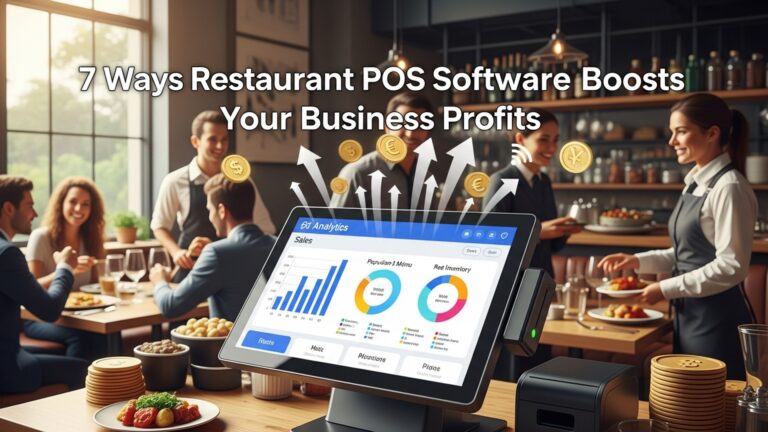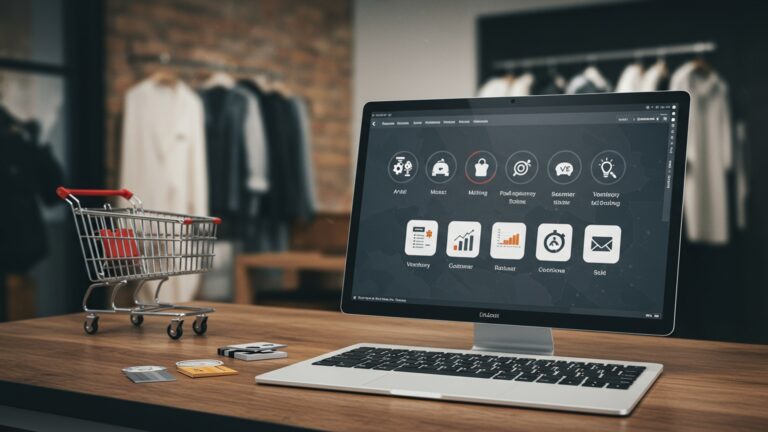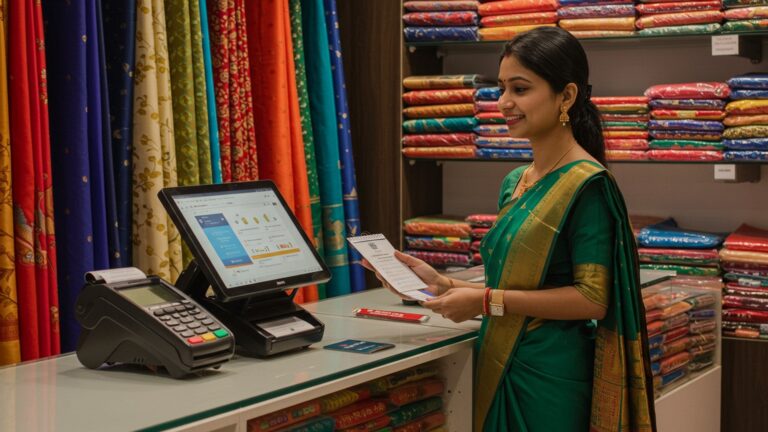Discover 5 Key Benefits of Barcode Scanners for Clothing POS
The modern retail landscape demands precision and speed, particularly within the fast-paced fashion sector where inventory accuracy directly impacts profitability and customer satisfaction. Gone are the days of manual stock counts and error-prone data entry slowing down sales floors. Today’s innovative retailers are leveraging the power of a robust clothing POS with barcode scanner to transform their operations. This critical integration streamlines everything from receiving new collections to facilitating lightning-fast checkouts, dramatically reducing discrepancies and enhancing overall efficiency. As consumer expectations for seamless shopping experiences rise, adopting this technology becomes not just an advantage. a necessity for maintaining a competitive edge and ensuring every garment is accounted for in real-time.

The Foundation: Understanding Clothing POS and Barcode Scanners
In the dynamic world of retail, efficiency and accuracy are paramount, especially for clothing businesses. At the heart of a streamlined operation lies the Point of Sale (POS) system, a crucial component that goes far beyond simply ringing up sales. A retail POS system, particularly in a clothing store, acts as the central hub for managing transactions, inventory, customer data. sales reports.
A barcode scanner, on the other hand, is an optical input device that reads barcodes—those ubiquitous lines and numbers found on nearly every product. These scanners translate the visual barcode into digital data, which is then sent to the POS system. When you integrate a barcode scanner into your clothing POS, you’re not just adding a gadget; you’re fundamentally transforming how your store operates. This synergy creates a powerful tool for managing the unique complexities of clothing retail, from varying sizes and colors to rapid fashion cycles.
Consider the traditional manual approach where a cashier might type in a product code or search for an item’s description. This process is inherently slow and prone to errors. A modern clothing POS with barcode scanner eliminates these bottlenecks, ensuring that every transaction is processed quickly and accurately, thereby enhancing both operational efficiency and customer satisfaction.
Benefit 1: Expedited Transactions and Reduced Checkout Times
One of the most immediate and tangible benefits of implementing a barcode scanner in your clothing POS is the dramatic acceleration of the checkout process. In retail, time is currency. long queues can quickly deter customers and lead to lost sales. Barcode scanners fundamentally change this dynamic.
- Instant Product Identification: Instead of manually searching for an item’s SKU (Stock Keeping Unit) or typing in a price, a quick scan instantly pulls up all relevant product details—item name, size, color, price. any applicable discounts.
- Reduced Manual Entry: Eliminating manual data entry significantly cuts down on transaction time. For a clothing store with a high volume of diverse items, this means fewer keystrokes and less time spent per customer.
- Enhanced Customer Flow: Faster checkouts translate directly into shorter lines and a smoother flow of customers through your store. This is particularly critical during peak shopping hours, sales events, or holidays when customer patience can wear thin.
Imagine a busy Saturday afternoon in your boutique. Without a barcode scanner, a cashier might spend 30-60 seconds per item, verifying prices and entering details. With a barcode scanner, that time drops to mere seconds. Over the course of an hour, this efficiency gain can mean serving dozens more customers, leading to increased sales and a reputation for speedy service. Industry reports often highlight that customers rank quick checkout as a top priority for a positive shopping experience, reinforcing the value of a clothing POS with barcode scanner.
Benefit 2: Enhanced Inventory Accuracy and Management
Inventory management in clothing retail is notoriously complex due to variations in style, size, color. fit. Manual inventory tracking is a labor-intensive process that is highly susceptible to errors, leading to discrepancies between physical stock and recorded inventory. This is where a barcode scanner provides transformative benefits.
- Real-time Inventory Updates: Every sale, return, or stock receipt scanned instantly updates your POS system’s inventory levels. This provides a real-time, accurate picture of what’s in stock, eliminating guesswork.
- Precise Tracking of Specific SKUs: Barcodes allow for granular tracking. You can know exactly how many “Medium Blue V-Neck Sweaters” are on hand, rather than just “V-Neck Sweaters.” This level of detail is invaluable for reordering and merchandising decisions.
- Simplified Stock Takes: Physical inventory counts become significantly faster and more accurate. Instead of counting items by hand and manually recording them, staff can simply scan items, with the system automatically reconciling counts.
- Reduced Shrinkage: By maintaining accurate records, you can better identify discrepancies that might indicate theft or operational errors, thus aiding in loss prevention efforts.
Consider the case of “Fashion Forward Boutique.” Before implementing a clothing POS with barcode scanner, their quarterly inventory counts would take two full days, often requiring store closure. still resulted in a 5-10% discrepancy. After adopting the system, their stock takes were reduced to half a day, with inventory accuracy climbing to over 98%. This not only saved labor costs but also ensured they never missed a sale due to unknowingly being out of stock on a popular item.
Here’s a quick comparison of manual vs. automated inventory tracking:
| Feature | Manual Inventory Tracking | Automated (Barcode Scanner) Tracking |
|---|---|---|
| Accuracy | Low to Moderate (prone to human error) | High (minimal human error) |
| Speed | Slow (labor-intensive, time-consuming) | Fast (instantaneous updates) |
| Real-time Data | Rarely (updates are delayed) | Yes (immediate updates upon transaction) |
| Labor Cost | High (requires significant staff hours) | Low (streamlined processes) |
| Detailed Tracking | Difficult (often limited to broad categories) | Excellent (tracks specific SKUs, variations) |
Benefit 3: Minimized Human Error and Loss Prevention
Human error is an inevitable part of any manual process. in retail, these errors can be costly. Miskeying product codes, entering incorrect prices, or mistakenly ringing up the wrong item can lead to financial losses, incorrect inventory data. dissatisfied customers. A barcode scanner is a powerful tool for mitigating these risks, significantly contributing to loss prevention.
- Elimination of Pricing Errors: Once an item’s price is correctly entered into the POS system and linked to its barcode, every subsequent scan will pull the accurate price. This eliminates instances of cashiers accidentally overcharging or undercharging customers, ensuring consistency and fairness.
- Accurate Item Identification: Especially in clothing retail where similar-looking items might have different prices or sizes, scanning ensures the correct SKU is always registered. This prevents scenarios where a customer pays for a small shirt but walks out with a large, due to a cashier’s oversight.
- Reduced Sweethearting and Internal Theft: While not a standalone solution, accurate scanning makes it harder for employees to intentionally undercharge friends or family (“sweethearting”) or to falsely record sales. The digital trail created by each scan provides accountability.
- Streamlined Void and Return Processes: Errors in voids and returns can also contribute to shrinkage. With a barcode scanner, these processes become more controlled and auditable, reducing opportunities for misuse.
A study by the National Retail Federation consistently points to operational errors and internal theft as significant contributors to retail shrinkage. A robust clothing POS with barcode scanner directly addresses these areas. For instance, “Thread & Needle Boutique” reported a 15% reduction in unexplained inventory shrinkage within six months of implementing their new barcode-integrated POS, attributing the improvement to both the elimination of manual entry errors and increased accountability at the checkout.
Benefit 4: Streamlined Returns and Exchanges
Returns and exchanges are an integral part of the clothing retail experience. While often seen as a hassle, a smooth and efficient returns process can significantly enhance customer satisfaction and loyalty. Conversely, a cumbersome returns process can quickly turn a customer away for good. Barcode scanners transform this often-dreaded task into a quick and easy operation.
- Instant Sales Verification: When a customer brings an item back for return or exchange, scanning the item’s barcode (or the barcode on the original receipt, if available) instantly pulls up the original transaction details. This verifies the purchase date, price paid. payment method, even without a physical receipt in many modern systems.
- Accurate Inventory Reinstatement: Once an item is returned, scanning it back into inventory ensures that your stock levels are immediately updated. This is crucial for popular items that might quickly sell out; a returned item can be put back on the sales floor without delay, preventing missed sales opportunities.
- Reduced Fraud: By instantly verifying purchase details, barcode scanners help prevent fraudulent returns of items not purchased from your store or items bought at a lower price.
- Enhanced Customer Experience: Customers appreciate a quick and hassle-free return process. Spending less time waiting for a return to be processed leaves a positive impression, encouraging repeat business.
Imagine a customer returning a dress. With a clothing POS with barcode scanner, the associate simply scans the dress tag and the system instantly recognizes the item, its price. perhaps even its original purchase date. If the customer has the receipt, scanning its barcode makes the process even faster, pulling up the entire transaction. This efficiency not only saves staff time but also makes the customer feel valued and respected, turning a potential point of frustration into an opportunity to build loyalty.
Benefit 5: Data-Driven Insights and Informed Decision-Making
Beyond the operational efficiencies, one of the most powerful long-term benefits of a clothing POS with barcode scanner is its ability to generate rich, actionable data. Every scan, every sale. every return contributes to a wealth of data that, when properly analyzed, can provide invaluable insights into your business performance and customer behavior.
- Sales Trend Analysis: By tracking every item sold, you can easily identify best-selling products, slow-moving inventory. seasonal sales patterns. This data is critical for making informed purchasing decisions and optimizing stock levels.
- Customer Purchase History: Many POS systems link scanned transactions to customer profiles (if they’ve signed up for a loyalty program). This allows you to interpret individual customer preferences, tailor marketing campaigns. offer personalized recommendations.
- Performance Metrics: Generate reports on sales per employee, average transaction value, peak shopping hours. conversion rates. These metrics help you evaluate staff performance, optimize staffing schedules. identify areas for improvement.
- Merchandising Optimization: Understanding which items sell together or which display configurations drive the most sales can inform your store layout and visual merchandising strategies.
For example, a clothing store using a barcode-integrated POS might discover that “denim jeans in sizes 28-32 consistently sell out within two weeks of arrival, especially when displayed near graphic tees.” This insight, derived directly from sales data collected by the barcode scanner, allows the store owner to increase orders for those specific jeans, ensure they are always well-stocked. strategically place them to maximize cross-sells with graphic tees. Without a barcode scanner providing this granular data, such insights would be difficult, if not impossible, to obtain accurately and efficiently.
Here’s an example of the kind of sales data you can extract:
-- SQL query example (conceptual) to retrieve top 5 selling items by quantity
SELECT p. product_name, p. sku, SUM(li. quantity) AS total_quantity_sold
FROM transactions t
JOIN line_items li ON t. transaction_id = li. transaction_id
JOIN products p ON li. product_id = p. product_id
WHERE t. transaction_date BETWEEN '2023-01-01' AND '2023-12-31'
GROUP BY p. product_name, p. sku
ORDER BY total_quantity_sold DESC
LIMIT 5;
While the actual extraction happens through your POS interface, this conceptual query illustrates how detailed the underlying data can be. This depth of data empowers clothing retailers to move beyond guesswork and make truly data-driven decisions that propel their business forward.
Conclusion
Implementing barcode scanners isn’t merely an upgrade; it’s a strategic imperative for any modern clothing POS seeking competitive edge. Having observed numerous retail operations, I can attest that the immediate reduction in queue times during peak seasons, like a festive sale, significantly elevates the customer experience. It’s akin to upgrading from a slow manual calculator to a lightning-fast digital system, transforming potential frustration into fluid transactions. Beyond just speed, this technology empowers you with real-time inventory insights, crucial for preventing stockouts of popular sizes or colors – a common pitfall in apparel. My personal tip: don’t just consider them; conduct a small pilot with a few scanners and witness the operational shift firsthand. In an era where omnichannel retail demands precision and speed, a reliable barcode scanner ensures your physical store keeps pace with online efficiency, a recent development that savvy retailers are already leveraging. Embrace this seamless integration as your next step towards a truly optimized and profitable clothing business. For deeper insights into leveraging your POS, explore how to Implement POS Software for Seamless Sales and Inventory Management.
More Articles
Top 10 Benefits of POS Software for Clothing Stores in India
7 Essential Features Your Clothing Store POS Software in India Needs
How to Optimize Inventory Management POS India for Profit Growth
Learn 7 Ways the Best POS System Transforms Your Garment Shop Operations
FAQs
How do barcode scanners make checking out clothes faster?
Barcode scanners instantly read product details, dramatically speeding up transactions compared to manual entry. This means shorter lines and happier customers.
Do scanners really cut down on mistakes when ringing up items?
Absolutely! They virtually eliminate human error from manual price entry, ensuring customers are charged correctly and your sales data is accurate every single time.
How do these scanners help me keep track of my clothing stock?
Scanners make inventory updates a breeze. Every scan for a sale or return automatically adjusts your stock levels, giving you real-time insights into what’s on your shelves and what needs reordering.
Will using a scanner make my customers happier?
Definitely! Faster checkouts mean less waiting. accurate pricing builds trust. This all adds up to a smoother, more satisfying shopping experience for them, encouraging repeat visits.
Can barcode scanners help prevent theft or lost items in my store?
While not a direct anti-theft device, accurate and real-time inventory tracking from scanners helps you quickly identify discrepancies. This makes it harder for items to go missing unnoticed and significantly aids in loss prevention efforts.
Are barcode scanners hard for my staff to learn?
Not at all! They’re super intuitive and user-friendly. Most staff can learn to use them effectively in just a few minutes, which means less training time and quicker productivity.
What kind of useful info can I get from using barcode scanners?
With accurate sales data collected by scanners, you can generate detailed reports on best-selling items, peak sales times. inventory turnover. This helps you make smarter business decisions about purchasing and merchandising.






